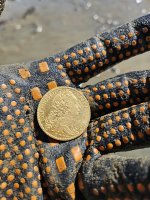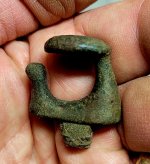JG
Jr. Member
- Nov 15, 2006
- 89
- 4
Hello all F75 owners!
The question has to do with VDI numbers on targets that are near the edge of detection with a VDI.
It also deals with the Discrimination mode and All Metal Mode/Stat.
Observation:
AMM gives a tighter range of VDI numbers than say in JE. What I mean to say is the VDI has (can have) a broader reading in JE Vs. AMM. Not necessarily a bad thing because,..
It has been noticed AMM (buried target) can give a VDI above the air test VDI, but very close. JE sometimes a bit more exaggerated. I call it VDI overshoot.
Here is the question: Have anyone of you noticed a solid or an air VDI greater than the overshoot (MAX) VDI in AMM? How close was the max VDI to the best repeatable 'true' VDI?
This may help in unmasking iron and better target identification.
Again, this applies to targets at the edge of detection with VDI information. It can also apply to masked targets. Any targets producing a range of VDI values at the edge of detecting a 'true' repeatable VDI.
Thanks,
Jim
PS. maybe VDI overshoot is too much gain? any comments?
The question has to do with VDI numbers on targets that are near the edge of detection with a VDI.
It also deals with the Discrimination mode and All Metal Mode/Stat.
Observation:
AMM gives a tighter range of VDI numbers than say in JE. What I mean to say is the VDI has (can have) a broader reading in JE Vs. AMM. Not necessarily a bad thing because,..
It has been noticed AMM (buried target) can give a VDI above the air test VDI, but very close. JE sometimes a bit more exaggerated. I call it VDI overshoot.
Here is the question: Have anyone of you noticed a solid or an air VDI greater than the overshoot (MAX) VDI in AMM? How close was the max VDI to the best repeatable 'true' VDI?
This may help in unmasking iron and better target identification.
Again, this applies to targets at the edge of detection with VDI information. It can also apply to masked targets. Any targets producing a range of VDI values at the edge of detecting a 'true' repeatable VDI.
Thanks,
Jim
PS. maybe VDI overshoot is too much gain? any comments?






